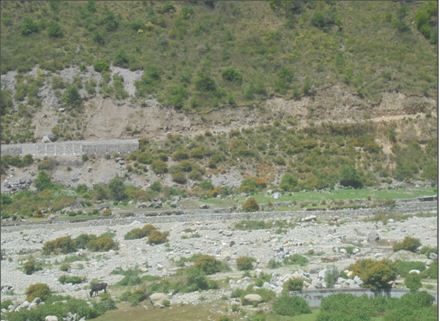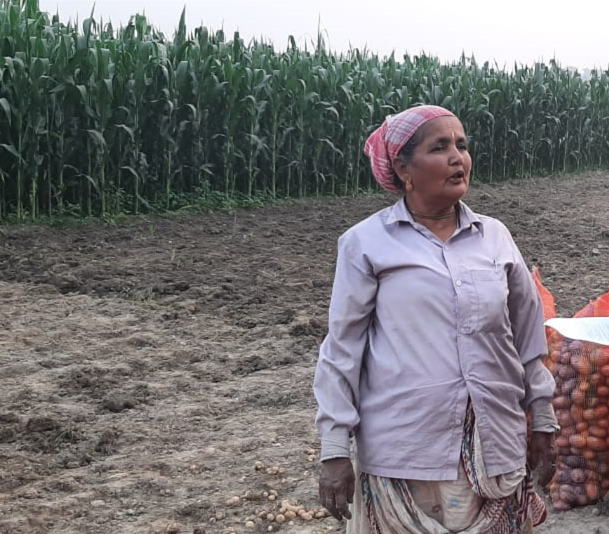Understanding the Micro flora for Sustainability

Understanding the Micro flora for Sustainability
Let’s go through and understand the Micro flora of soil with reference to its significance in Soil sustainability
Oxygen :
The oxygen in the soil decides the presence microorganisms. Aerobic microorganism needs sufficient level of frees oxygen for their survival . Anaerobic microorganism though can survive in absence of oxygen but derives it from other compound .The facultative microorganism are adoptable to very low oxygen level but flourishes well in sufficient level of oxygen .
Temperature:
Apart from Oxygen ;Temperature is crucial factor in presence of the Soil microorganisms .Psychrophiles microorganism can survive in less the 10c. Mesophiles Microorganism can survive in less the 20-40c. Thermopiles Microorganism can survive in more than 40 c

The Microorganisms fulfill its requirements for carbon dioxide in different ways . Autotrophs are capable enough to fix carbon dioxide, whereas Heterotrops depends on organic matter for their carbon.

They can proliferate only when soil organic matter is high. So, the necessity of organic matter for survival of heterotrophic organism has to be thorough understood. The agriculture importance bacteria like Rhizobium, Nitrobacter , Nitrosomonas all are heterotrophic in nature . The organic matter content in soil is important for their survival . Their population in soil has significant effect in agriculture production . Heterotrophic micro flora require organic matter for their carbon form ..
After the role of oxygen and temperature ;it’s the presence of moisture in sustainability of soil.
Moisture:
Soil moisture is the important factor in deciding the type of microorganisms present in the soil . When soil moisture is near or below field capacity , aerobic bacteria flourish. So, For aerobic bacteria to flourish , it is important that balance spread of irrigation should be provided .While irrigating a crop utmost care should be taken so that the pore space meant for air movement in the soil should not get saturated with irrigation water. When the soil is submerged or saturated only anaerobic bacteria exists .Likewise , for flourishing the anaerobic bacteria , the soil has to submerged or saturated . So, likewise the irrigation should be handled. Actinomycetes microorganism can’t survives under anaerobic condition while they predominates in dry regions . The optimum moisture for aerobic bacteria to survive is 50-75% of Water holding capacity (WHC) .
pH:
Different groups of microorganism has varying requirement for pH. It varies with type of micro flora. The bacteria grows well within pH of 6.5-8. Fungi prefer acidic range of 4.5 -6.5 . while, Actinomycetes prefers slightly alkaline.
Co2 & Sunlight
Most micorflora of the soil are mesophile and grow well at conditions 15-450c with optimum being 370c . Higher carbon dioxide concentration is toxic to microbes . Direct sunlight is injurious to most micro flora.
The soil microflora that has important role in agriculture production –
Soil bacteria
Soil bacteria – Bacteria has a significant role to play in soil sustainability .They are the smallest and simplest forms of plant life .They have a significant role to play in soil fertility for better crop production. They are single cell organism and varies in shape ,most of which are spherical or rod shaped . The bacteria weigh about 0.01 to 0.4% of soil weight. They are most abundant in soil among the microbes present in the soil . The most abundant spp. of soil bacteria are pseudomonas .
1)Azatobacter,
2)Bacillus,
3)Arthobacter,
4)Aerobacter, and
5)Agrobacterium
The important species of bacteria from plant nutrition point of view are –Rhizobium, Clostridium, Nitrobacter , Nitrosomonas. As these bacteria are heterotrophic , their population depends on soil organic matter. Here comes the important role of green manuring and other organic way of agriculture . The increase in organic matter will influence the several process and transformation of nutrients . Nitrogen fixation is an important process carried out by bacteria and this has considerable influence on agriculture. Not only, fixation but mineralization process in which several steps in mineralization of organic matter are carried out by bacteria which release several nutrients like N,P,K,S and Fe . Bacteria are also involved in decomposition of cellulose and oxidizing of cellulose and oxidizing sulphur and manganese .
Soil Fungi
Soil Fungi -After Bacteria; the fungi has also an important role to play in providing sustainability to the soil . The number of soil fungi per unit weight of soil is less than the number of soil bacteria(0.9 to 1.4 million per gram of soil but on weight basis they are approximately equal as they are bigger in size than the bacteria . The presence of Fungi are more in acidic soil as in such conditions the bacteria and actinomycetes are almost inactive .
The optimum PH range is 4.5 to 6.5.The major Fungi are:
1)Aspergillus
2)Fusarium
3)Trichoderma
4)Mucor and
5)Pencillium.
They perform 2 important functions in soil for its sustainability. First of all they acts as scavengers and ensure much required decomposition. This decomposition process adds to fertility of the soil . Apart from this some of the fungi ,Feed on protozoa and nematodes and hence maintain micro flora equilibrium in the soil .
Mycorrhizia
Mycorrhizia:-In most of the case, it has been seen that the soil has the nutrients but the plant can’t absorb it . The reason being , it is present in unavailable form and hence there is need to convert in available form. Mainly the phosphorus is present in unavailable form .Mycorrhizia another soil fungi , solublize the phosphates in soils and makes available to plants on which they live .The Mycorrhizia that live inside roots i.e Endotrophics are rhizoctonia and phoma . The ectotrophic Mycorrhizia , that develops on root surface are amanita and boletus.
Actinomycetes
Actinomycetes :-Actinomycetes are important in agriculture. They are widely distributed in soil , compost etc. Their population is more in top layers of the soil especially in tropical dry regions and grass lands .The fertility is maintained by the interactions of Actinomycetes. These are thread like organism and are intermediate in size between bacteria and fungi. Streptomyces is the most common genera of actinomycetes. They are aerobic and heterotrophic and their activity is less in acid soils . The optimum temp. for mesophiles of actinomycetes are in the range of 28-370c . Thermopiles are present in manure and compost pits . Though their rate of decomposition is lower than bacteria and fungi, they decompose all types of materials and are also capable of decomposing more resistant organic matter. However , the rate of decomposition is sow compared to bacteria and fungi .
Soil Algae
Soil Algae are autotrophic and they contain pigments to fix carbon dioxide .Both micro and macroscopic organism are present in this group. depending on colour algae are :
• Cyanophyta- BGA, occurs mainly in tropical region
• Cholrophyta-grass green algae that exists in grass lands of temperate region .
• Xanthophyta- Yellow green algae-
• Bacillariophyta-golden green algae.
The population of Blue green algae i.e BGA in rice field is 43, 000.g soil. The most common genera are anaerobic and nostoc .They fix atmospheric nitrogen and are used as bio fertilizers .All these process helps in maintaining the soil sustainability. This is how the soil as one of the most important Natural resource in Watershed Management can be enriched and enhanced in way to Sustainability.




